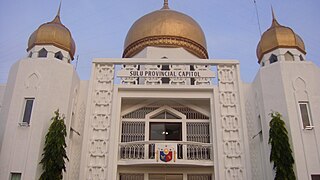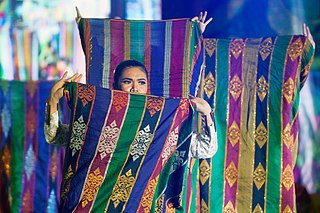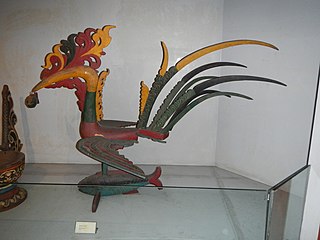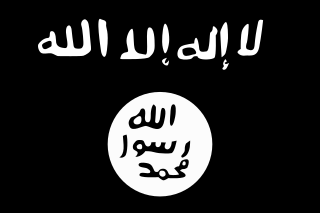
Sulu, officially the Province of Sulu, is a province of the Philippines in the Sulu Archipelago and part of the Bangsamoro Autonomous Region in Muslim Mindanao (BARMM).

Lanao del Sur, officially the Province of Lanao del Sur, is a province in the Philippines located in the Bangsamoro Autonomous Region in Muslim Mindanao (BARMM). The capital is the city of Marawi, and it borders Lanao del Norte to the north, Bukidnon to the east, and Maguindanao del Norte and Cotabato to the south. To the southwest lies Illana Bay, an arm of the Moro Gulf.

The Autonomous Region in Muslim Mindanao was an autonomous region of the Philippines, located in the Mindanao island group of the Philippines, that consisted of five predominantly Muslim provinces: Basilan, Lanao del Sur, Maguindanao, Sulu, and Tawi-Tawi. It was the only region that had its own government. The region's de facto seat of government was Cotabato City, although this self-governing city was outside its jurisdiction.

Marawi, officially the Islamic City of Marawi, is a 4th class component city and capital of the province of Lanao del Sur, Philippines. According to the 2020 census, it has a population of 207,010 people.

Islam in the Philippines is the second largest religion in the country, and the faith was the first-recorded monotheistic religion in the Philippines. Historically, Islam reached the Philippine archipelago in the 14th century, through contact with Muslim Malay and Arab merchants along Southeast Asian trade networks, in addition to Sufi missionaries from the Ba Alawi of Yemen from the Persian Gulf, southern India, and their followers from several sultanates in the wider Malay Archipelago. The first missionaries then followed in the late 14th and early 15th centuries. They facilitated the formation of sultanates and conquests in mainland Mindanao and Sulu. Those who converted to Islam came to be known as the Moros, with Muslim conquest reaching as far as Tondo that was later supplanted by Bruneian Empire vassal-state of Maynila.

The Maranao people, also spelled Meranao, Maranaw, and Mëranaw, is a predominantly Muslim Filipino ethnic group native to the region around Lanao Lake in the island of Mindanao. They are known for their artwork, weaving, wood, plastic and metal crafts and epic literature, the Darangen. They are ethnically and culturally closely related to the Iranun, and Maguindanaon, all three groups being denoted as speaking Danao languages and giving name to the island of Mindanao. They are grouped with other Moro people due to their shared religion.

The Moro people or Bangsamoro people are the 13 Muslim-majority ethnolinguistic Austronesian groups of Mindanao, Sulu, and Palawan, native to the region known as the Bangsamoro. As Muslim-majority ethnic groups, they form the largest non-Christian population in the Philippines, and comprise about 5% of the country's total population, or 5 million people.

The Sarimanok, also known as papanok in its feminine form, is a legendary bird of the Maranao people, who originate from Mindanao, an island in the Philippines, and part of Philippine mythology. It comes from the words sari and manok. Sari means "assorted" or "various", while manok originally meant "bird" as evidenced by early Spanish colonial sources, but came to mean only "chicken", which is how it is understood today.

The Moro conflict is an insurgency in the Mindanao region of the Philippines, which involves multiple armed groups. Peace deals have been signed between the Philippine government and two major armed groups, the Moro National Liberation Front (MNLF) and the Moro Islamic Liberation Front (MILF), but other smaller armed groups continue to exist. In 2017, the peace council settled around 138 clan conflicts.
Datu Yusoph Boyog Mama is a Filipino politician and government official. He was a candidate for public office as Autonomous Region in Muslim Mindanao (ARMM) Regional Governor in the previous 2013 Mid-term Elections, being the lone candidate representing the province of Lanao del Sur, one of the five (5) provinces constituting the ARMM territory. With the support of various key multi-sectoral groups in the province of Lanao del Sur and the provincial capital Islamic City of Marawi, Datu Yusoph B. Mama ran as an independent candidate.

Bangsamoro, officially the Bangsamoro Autonomous Region in Muslim Mindanao is an autonomous region in the Philippines, located in the southwestern portion of the island of Mindanao.

Ahod Balawag Ebrahim, better known as Al-hajj Murad Ebrahim, is a Moro Filipino politician and former rebel leader currently serving as the first chief minister of the Bangsamoro Autonomous Region in Muslim Mindanao.

The Bangsamoro Islamic Freedom Fighters (BIFF), also known as the Bangsamoro Islamic Freedom Movement, is an Islamist militant organization based in Mindanao, the Philippines. It follows the Wahhabi ideology that is currently being spread by Wahhabi preachers in the country. It is a smaller player in the overall Moro insurgency in the Philippines and is mostly active in Maguindanao and other places in central Mindanao. It is a breakaway group from the Moro Islamic Liberation Front founded by Ameril Umbra Kato. Following Kato's death, the group split into three factions, one of which has aligned with the Islamic State of Iraq and the Levant (ISIL), while the other two are less radical.
Abdulmari Asia Imao was a Filipino painter and sculptor. Imao was named National Artist of the Philippines for Visual Arts in 2006. A Tausūg, Imao is the first Moro to receive the recognition. Aside from being a sculptor, Imao is also a painter, photographer, ceramist, cultural researcher, documentary film maker, writer, and a patron of Philippine Muslim art and culture.
2017 in the Philippines details events of note that happened in the Philippines in 2017.

The siege of Marawi, also known as the Marawi crisis and the Battle of Marawi, was a five-month-long armed conflict in Marawi, Philippines, that started on May 23, 2017, between Philippine government security forces against militants affiliated with the Islamic State (IS), including the Maute and Abu Sayyaf Salafi jihadist groups. The battle also became the longest urban battle in the modern history of the Philippines.

Proclamation No. 216 was the 2017 proclamation of martial law and suspension of the privilege of the writ of habeas corpus in the whole of Mindanao amid clashes between government forces and Maute group terrorists in Marawi, issued by Philippine President Rodrigo Duterte on May 23, 2017. The state of martial law was extended thrice by Congress at the request of Duterte, citing necessity to quell hostile activities perpetrated by terrorist groups, and ended with the third extension lapsing on December 31, 2019.
The Philippines is one of the state opponents of the militant group, Islamic State of Iraq and the Levant (ISIL), more commonly referred to by the local media as the Islamic State of Iraq and Syria (ISIS).
Abdulmari de Leon Imao, Jr., better known by either Toym Leon Imao or Toym Imao, is a Filipino multi-media visual artist whose art is known for its commentary on Filipino social conditions, as well as for its pop culture sensibilities.

The Marawi Grand Mosque, also known as the Islamic Center is a mosque located in Pangarungan Village, Marawi, Lanao del Sur, Philippines.















